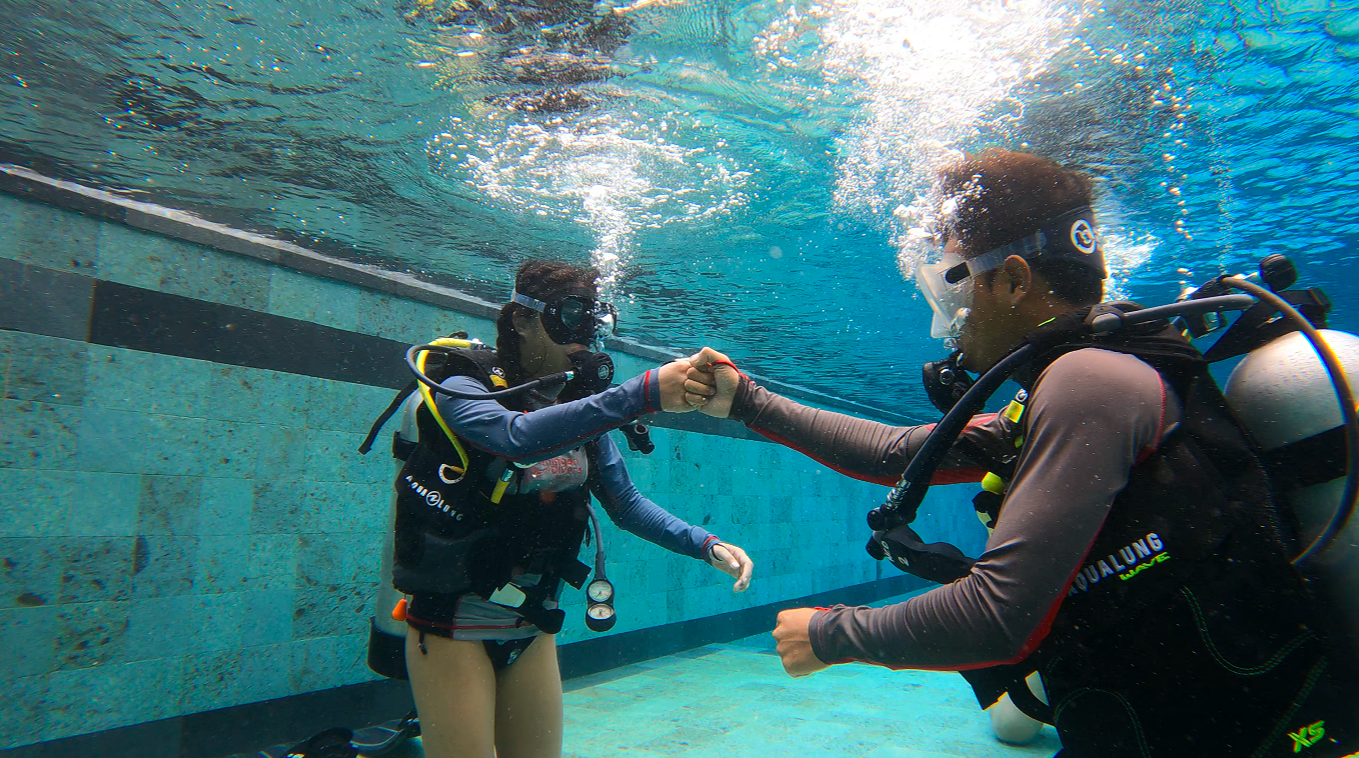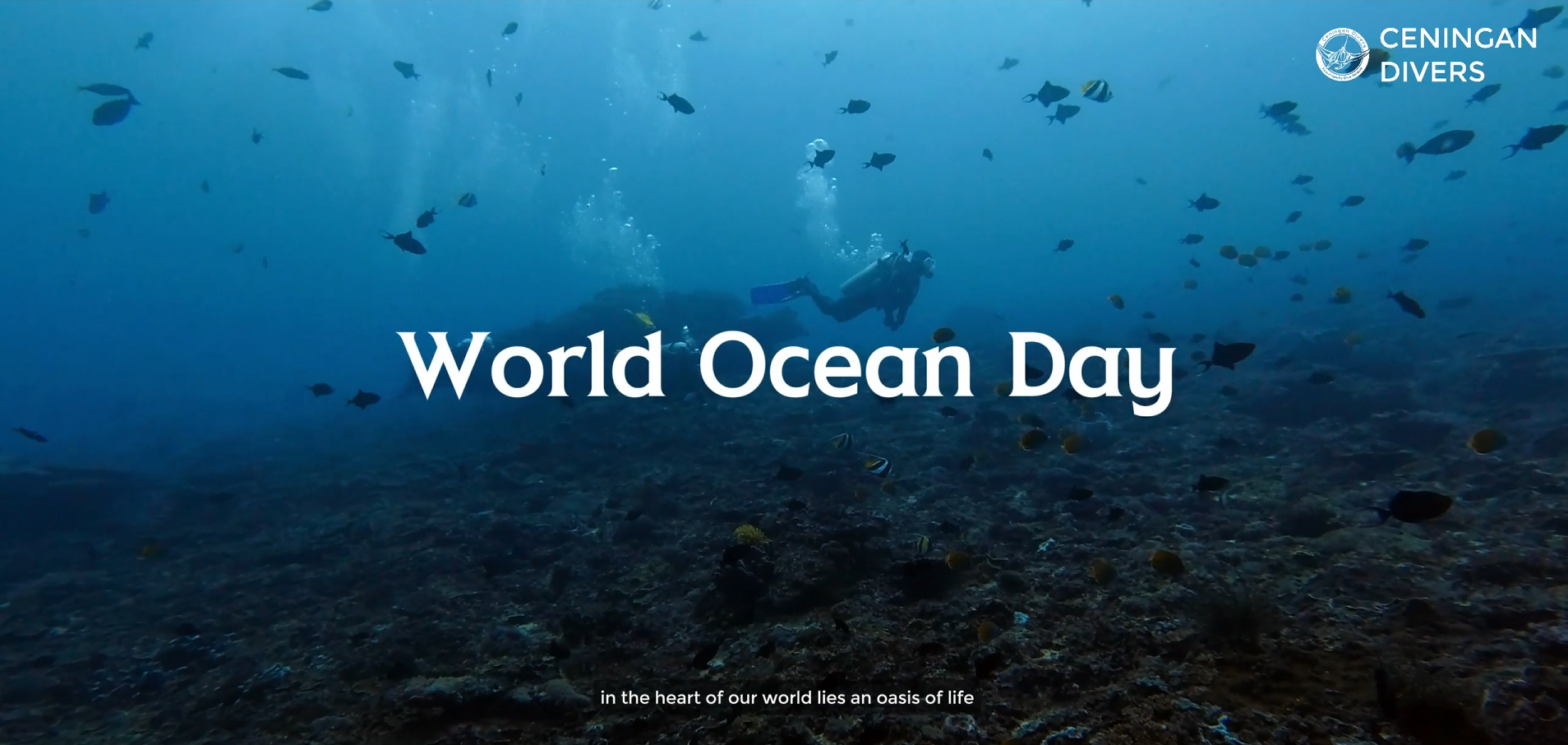Most scuba divers are environmentally aware divers and strong advocates for ocean conservation. As divers, we’ve experienced the incredible beauty, complexity and importance of coral reefs. We’ve seen and learned about marine life and about the many ways that people depend on the ocean and coral reefs.
However, it’s likely that you’ve also seen the many ways in which it is threatened. Which is worrisome for our future and downright heartbreaking to those who started caring about what almost feels like a second home.
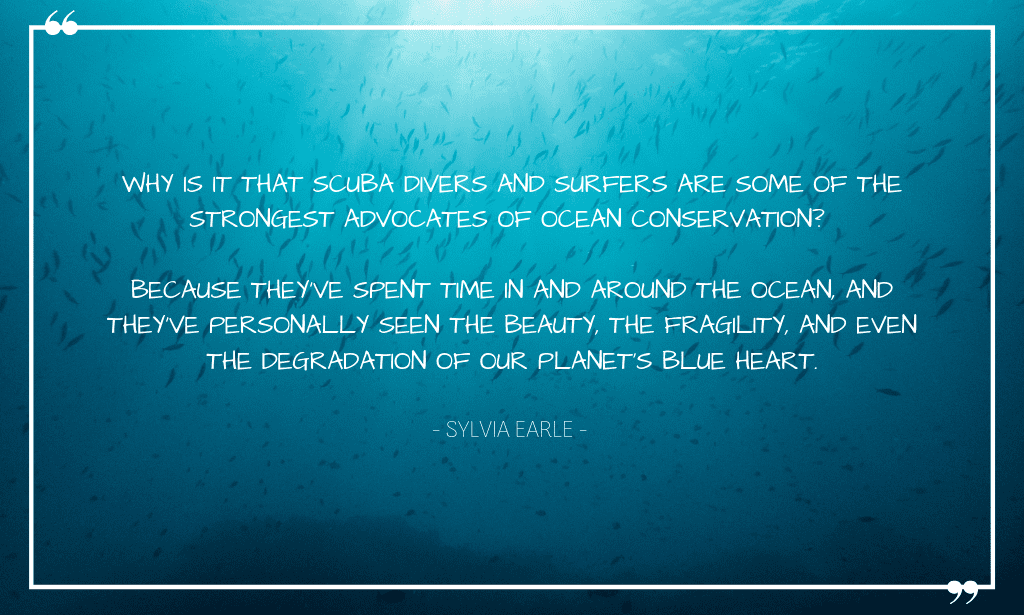
Divers impact on the reef
Divers, in general, don’t intend to harm the reef themselves. That would be much like sabotaging your own future dive adventures. Still, human carelessness can have big consequences beneath the waves. Divers often don’t know the significance of their impact on coral reefs. Coral is very sensitive to being touched. The smallest contact can infect or even kill it.
The most obvious reason is that coral can break off if divers kick into corals or grab onto something fragile. Coral is very slow growing. What may have taken decades or even hundreds of years to grow, is then destroyed within seconds.
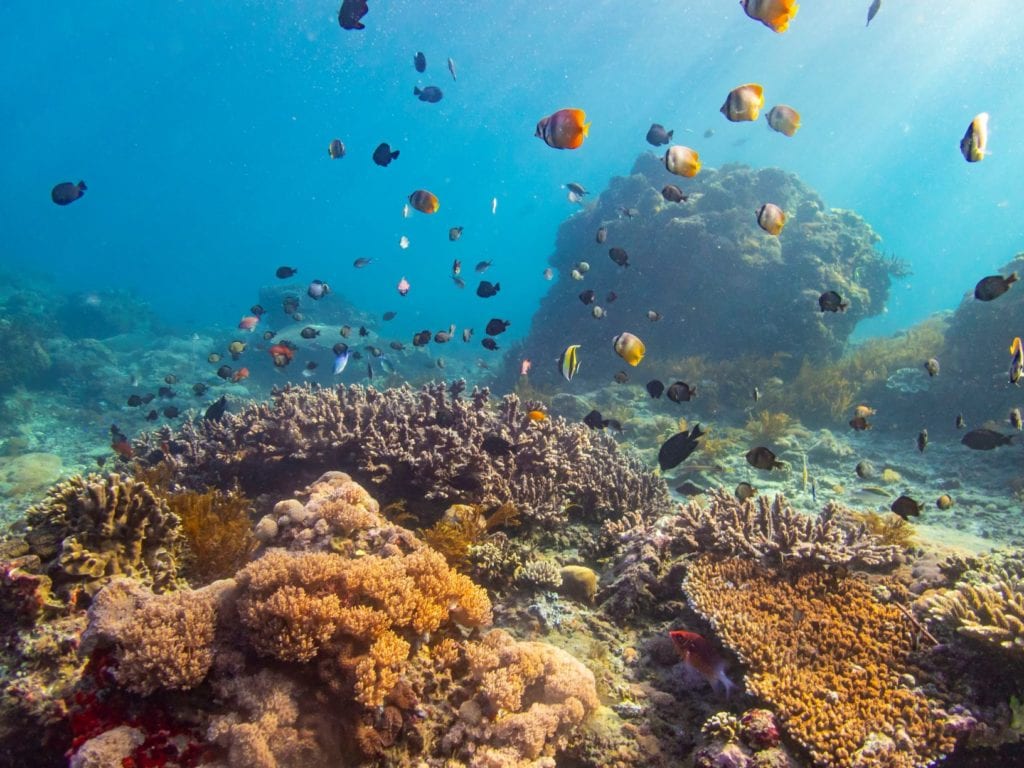
Holding a coral may also leave a trace of toxins, from substances in our daily use, that stress the coral out. Furthermore, a diver may kick up silt if close to a sandy bottom. If this lands on the coral it can suffocate the coral and inhibit its growth.
So what does it take to become an environmentally aware diver? As an eco-friendly dive resort, we always urge our guests to make sure they stay off the reef and don’t touch coral. Following the Green Fins best dive practices we promote good buoyancy control to avoid the risk of kicking coral while diving or stirring the sediment. For the beginning diver, however, this might be easier said than done. So how to go about it?
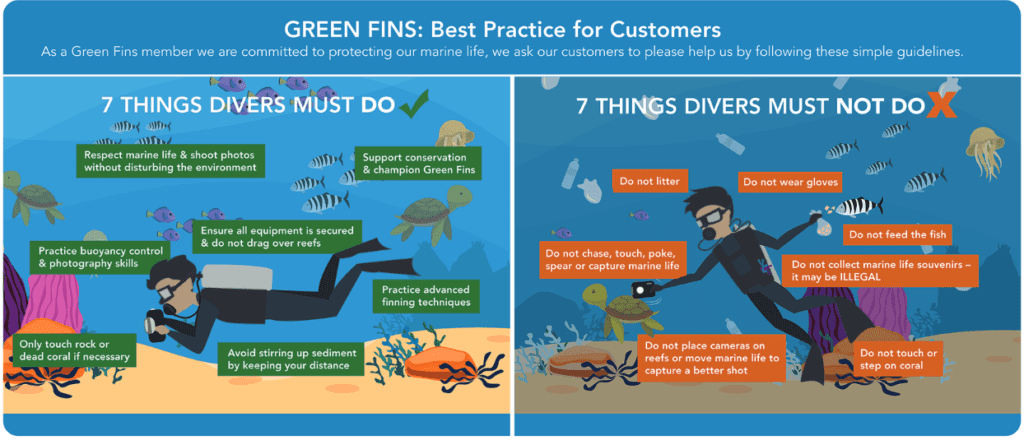
Buoyancy control for the beginning scuba diver: easier said than done?
As a diver, you learn the essence of buoyancy control in your Open Water Diver Course. Still, the first few times out in the ocean might feel both magical and uneasy. You might have the feeling you have to kick all the time to stay in the same position. Maybe you even feel the urge to hold on to something once you feel a bit of current or surge.
First of all, it’s important to be aware that these actions are rather a result of not yet having your buoyancy under control than actions that are needed to maintain it. We’ll get to that in a sec. Second, you should realize that good buoyancy control takes a lot of practice. You may wonder how the divemaster in front of you floats so effortlessly along the reef? Ask your divemaster how they experienced their first dives and how many dives they have done so far.
There are, however, a few things to keep in mind that will come a long way when working on your buoyancy control. Especially when you’re at the start of your scuba adventures.
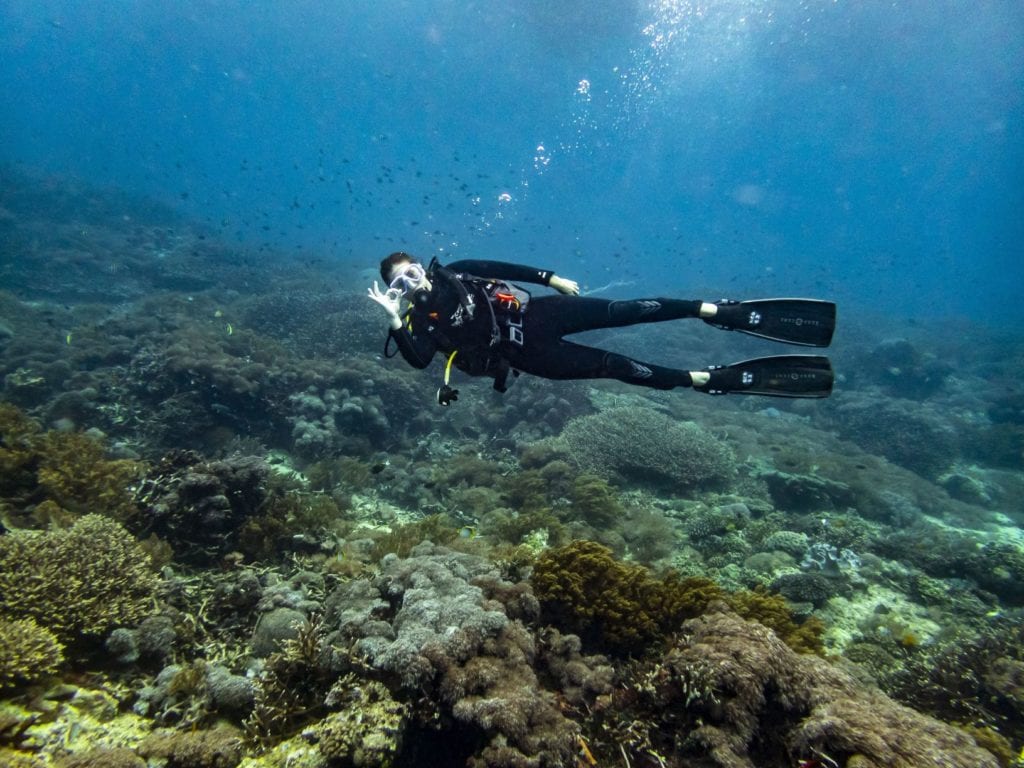
1. You might need to lose some weights
No, don’t start fasting or jump roping right away. We indeed mean those kilos on your weight belt. Ask our instructors what the most common problem is when beginning scuba divers struggle with buoyancy control, and they will tell you this. Divers often carry too much weight.
This may seem a bit counter-intuitive for starters since many beginning divers have the feeling they struggle more with becoming positively buoyant and ascending too fast. But chances are this is because you carry too much weight.
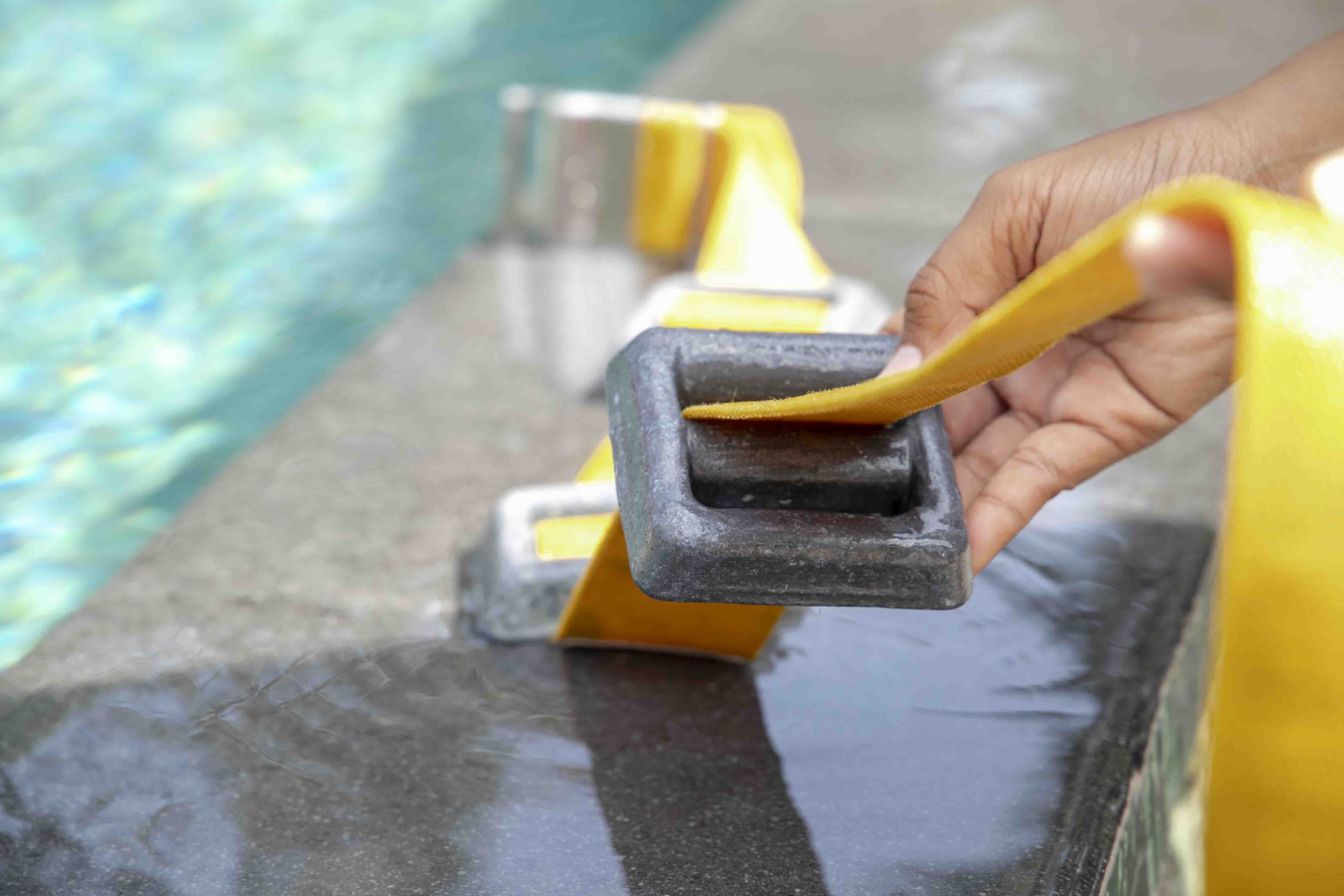
When overweighted you have to compensate for it by inflating your BCD more at a certain depth, to become neutrally buoyant. The result is that as soon as you shallow up a little, the air expands and you’ll become positively buoyant faster. You will start floating up further, increasing the effect, running the risk of a rapid ascent if you don’t let some air out of your BCD again.
Your BCD, however, is no elevator. Bouncing up and down the reef during the whole dive isn’t the way to go. So do that weight check again with your divemaster or instructor. You might need to lose one, instead of adding more. And as long as the ride along the coral is still a bit bumpy, keep a little more distance to it. In the meantime, practice makes perfect!
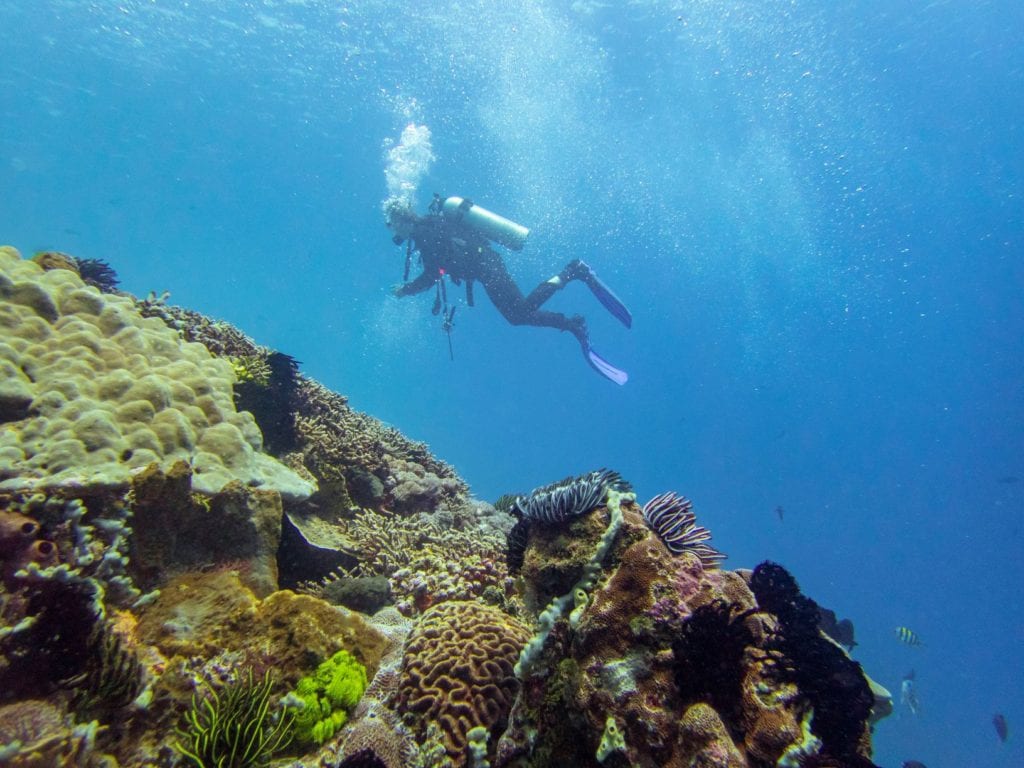
2. Learn to know your gear
It’s also important to understand that different types of gear can have a big effect on your buoyancy. Did you do your first dives in a wetsuit? Was it a full body wetsuit or a shorty? How many millimetres thick was it? You might not have realized yet that this all has an effect on how buoyant you are in the first place.
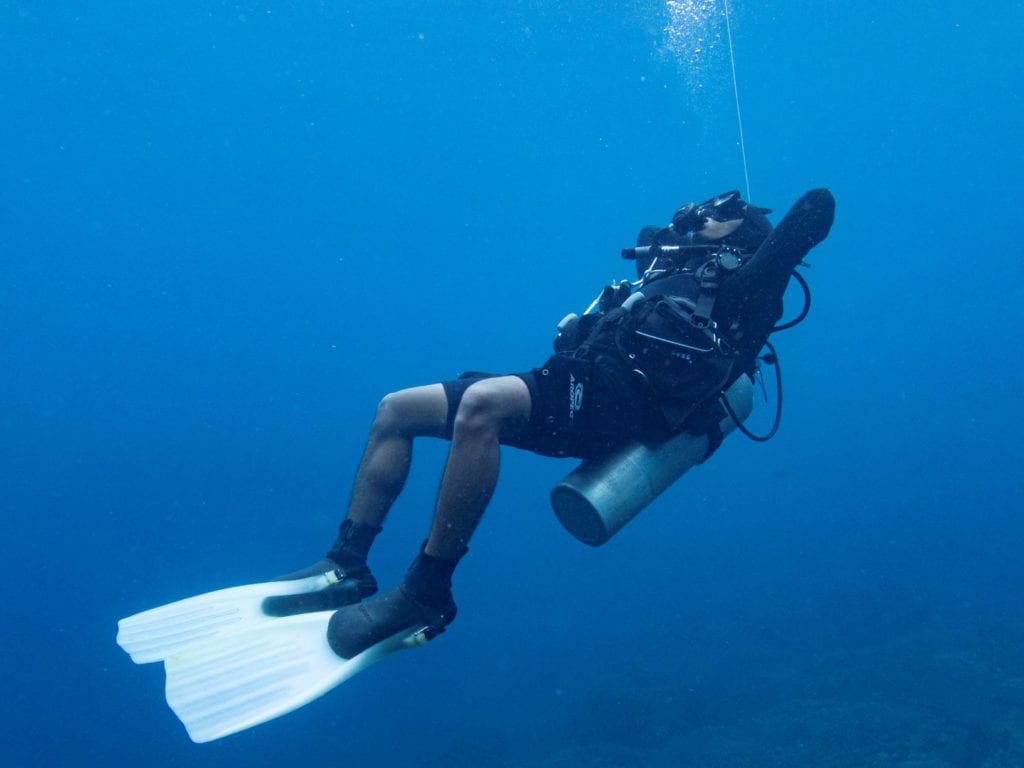
A wetsuit is buoyant in itself. And a new wetsuit even more so. A thicker one will add to your buoyancy and may make you need an extra weight.
Another example is steel versus aluminium tanks, with aluminium tanks being lighter than steel tanks. A difference that’s especially noticeable at the end of the dive.
3. Keep a logbook
What does a logbook have to do with buoyancy? Well, apart from writing down all the cool fish you saw during the dive, it’s also a way to monitor yourself and help you improve.
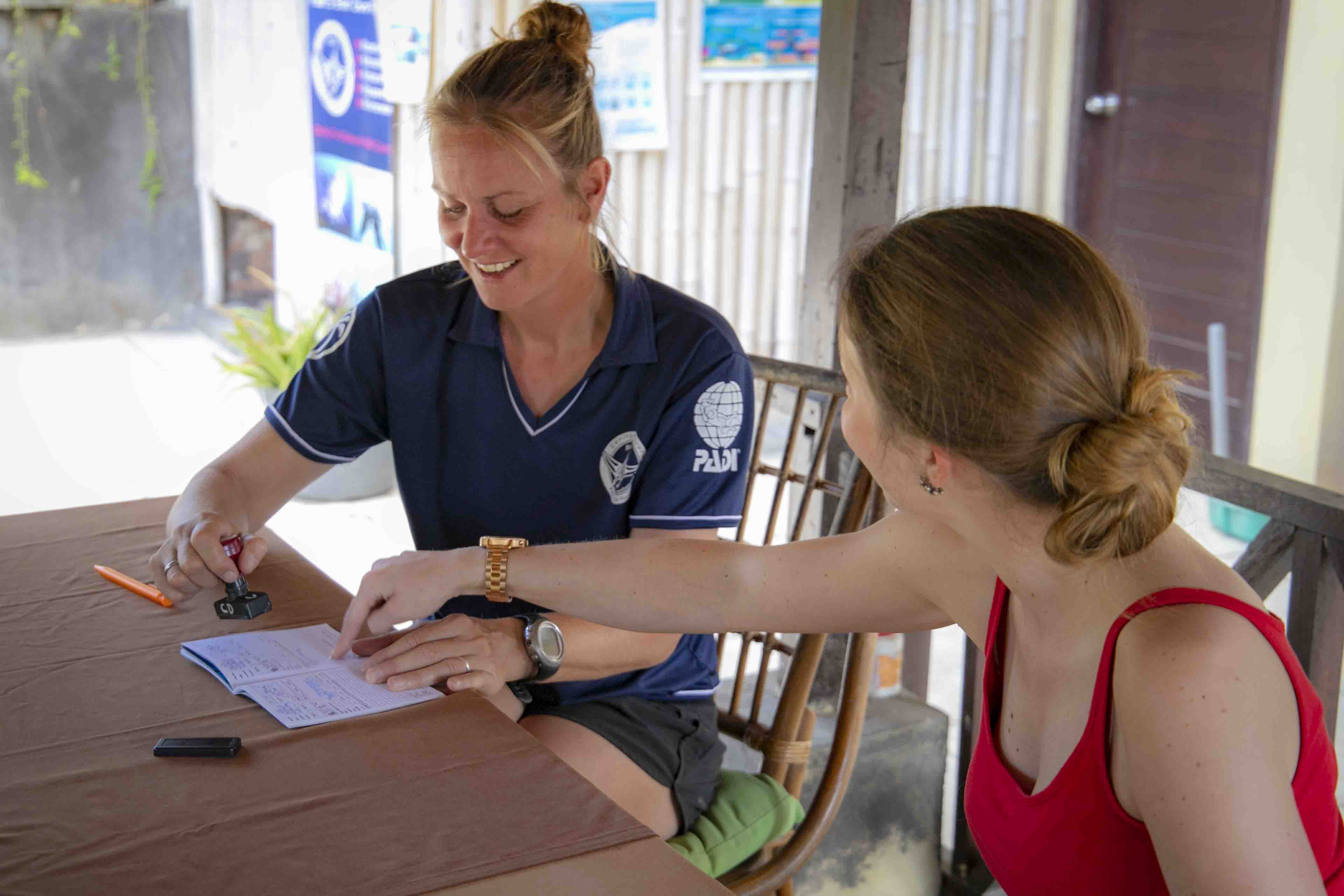
Especially as a beginning diver, it is good practice to keep a logbook. Probably you’ve already learned to write up information like the number of weights you’ve used. But as you understand other factors influence your buoyancy as well. So you might want to add information about the gear that you’ve used. And were the weights on your weight belt measured in pounds or kilograms? Maybe not something you’ve paid attention to when focussing on blowing your first bubbles in the ocean, right?
Chances are you don’t dive on a regular basis. For example when only diving on holiday. Especially when you have a lot of time between your dives, it comes in handy to have this information ready. You don’t have to reinvent your weighting completely and you’ll for sure have a more enjoyable dive when you jump in again!
4. Stay horizontal and practice your finning techniques
Before starting our scuba adventures, all we know is that it’s normal to use our arms for swimming. Hence, you wouldn’t be the first diver who’s ploughing through the blue like crazy. Underwater you won’t gain much with that though, except going through your air faster. No worries, we’ve all been there.
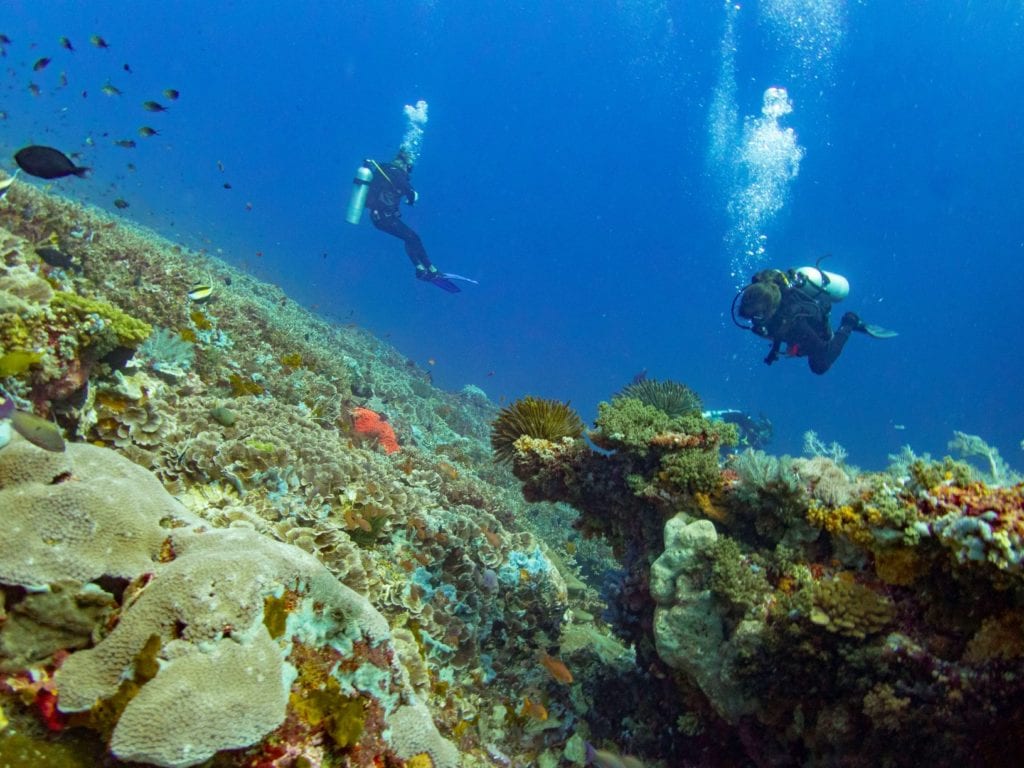
In the same way, beginning scuba divers are not very comfortable using their fins yet. They often stay in an upright position and kick vertically instead of horizontally along the reef. Not only does this increase chances of kicking into coral, but you will also push yourself upward. With decreasing depth, you might become positively buoyant without noticing it.
So relax, take it easy. It all starts by becoming aware of your trim and your movements. There is so much to see and experience beneath the waves that many starting divers forget about that.
It’s okay blaming it on the fish, as long as you try to improve to save their habitat as well. Just ask your instructor or dive guide for tips or a friendly reminder! In the end, it will all help you to enjoy your dives even more and make your air last longer as well.
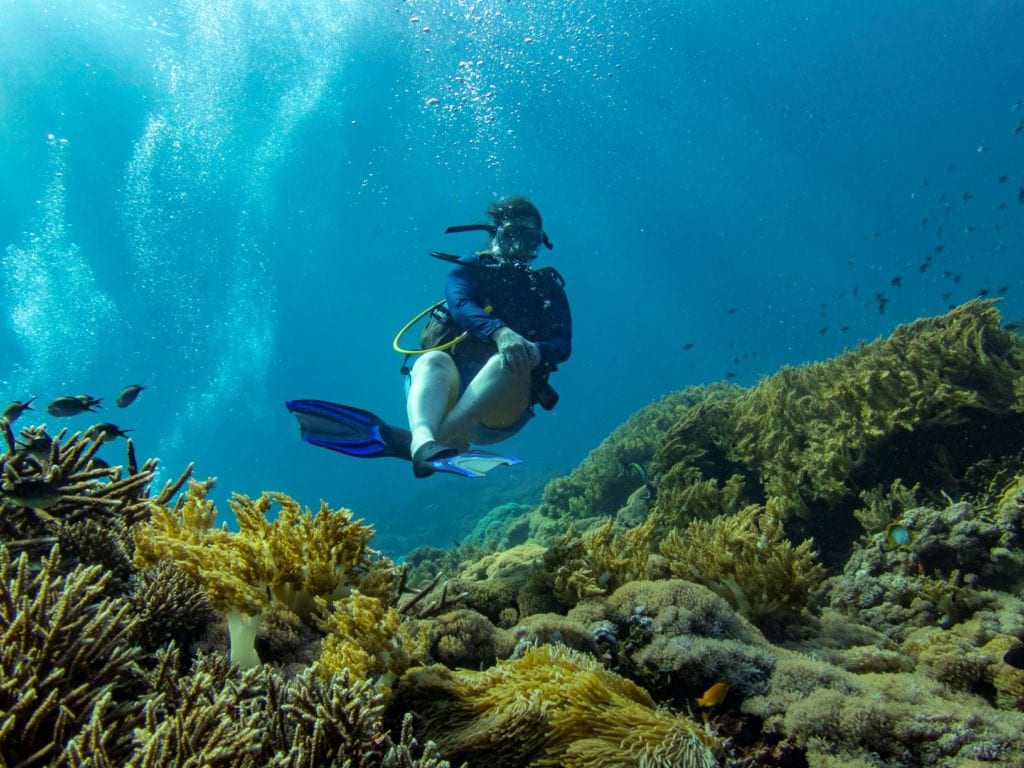
5. Go for Peak Performance Buoyancy
Even if you keep all those things in mind, good buoyancy control takes a lot of practice and experience. There are however courses that will help you take your skills to the next level.
We often advise divers who are struggling with their buoyancy control to take the PADI Peak Performance Buoyancy Specialty Course. A course designed to learn how to be perfectly balanced and move through the water more smoothly. Skills you learn in the course include:
- Determine the exact weight you need, so you’re not too light or too heavy.
- Trim your weight system and scuba gear so you’re perfectly balanced in the water.
- Streamline to save energy. Use air more efficiently and move more smoothly through the water.
- Hover effortlessly in any position – vertical or horizontal.

Practising these skills will help you make your dives more enjoyable too. Good buoyancy control is key! Not only will you glide more effortlessly through the water, but you will also use less air because of it. And who doesn’t want to enjoy longer dives!
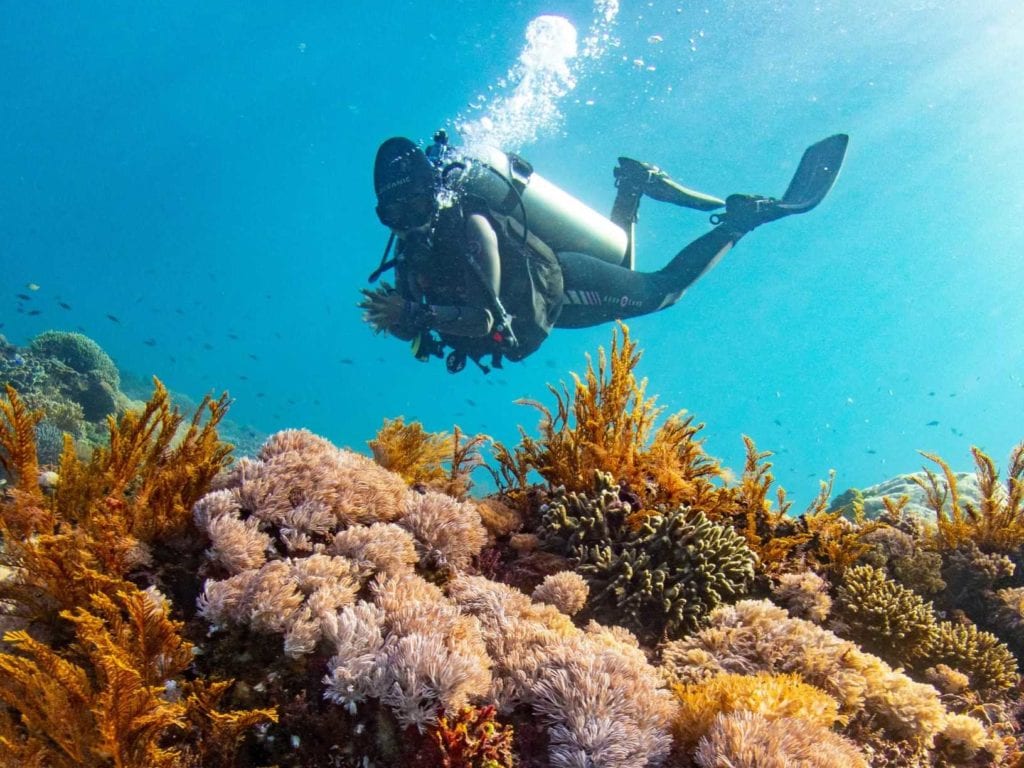
And, last but not least, it comes a long way in making sure you can enjoy beautiful marine life without disturbing their surroundings. Be an environmentally aware diver. Learn to apply those best dive practices and save the reef!

